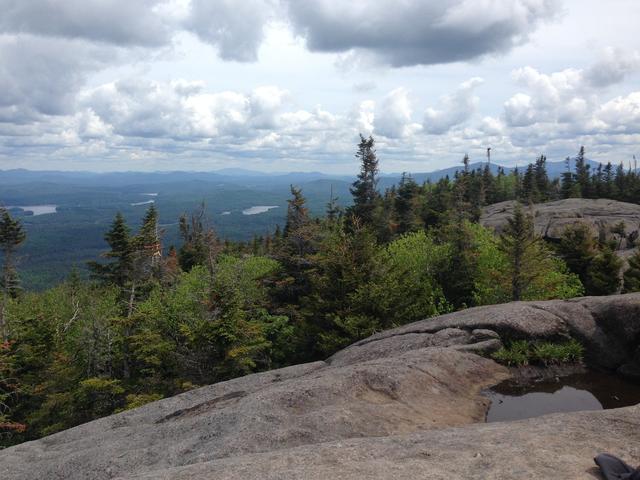Home » Regions » North America » Northern Forests » Atlantic Highlands » Northeastern Highlands » Adirondack High Peaks
Adirondack High Peaks
Last updated: April 9th, 2021
Page contents
↑About the Adirondack High Peaks
The Adirondack High Peaks is a region in the northeastern portion of the Adirondacks in northern New York State, in which there is a high concentration of peaks reaching over 3,000 feet. This region includes the mid elevations, between about 1,500 and 2,800 feet in elevation. Higher elevations are considered part of the Upper Montane / Alpine Zone.The climate is a humid continental climate, tending towards but not completely reaching an alpine climate; local microclimate is highly variable; as weather systems tend to move west-to-east bringing moisture-laden air from Lake Ontario, west-facing slopes have exceptionally high precipitation, but east-facing slopes are relatively drier. High elevations have heavy cloud cover, fog, high winds, and rime ice, direct condensation of ice onto plants and other surfaces. The frost-free season ranges from 60-120 days.
Natural forest cover here varies considerably with elevation. Below 2,500 feet it is a more conifer-rich variant of northern hardwood forest, with sugar maple (Acer saccharum), American beech (Fagus grandifolia), and yellow birch (Betula alleghaniensis), mixed with some red spruce (Picea rubens), eastern hemlock (Tsuga canadensis), and eastern white pine (Pinus strobus), with red spruce, yellow birch, and balsam fir becoming more common at higher elevations, transitioning to a spruce-fir forest at the top of this region. Common understory plants in this region include American mountain ash (Sorbus americana), catberry (Ilex mucronata), and creeping snowberry (Gaultheria hispidula). Red spruce, although still common here, has been declining, possibly due to acid precipitation.
This area has little year-round population, with most of the use being tourism, recreation, and wildlife habitat. There is almost no agriculture. A significant portion of this area is preserved as public land.
Outside the high-elevation peaks, this region is bordered to the east by the lower-elevation Eastern Adirondack Foothills and to the west by the Central Adirondacks.
 This photo was taken from Ampersand Mountain, and is typical of the Adirondacks High Peaks. Note the pool of water in the exposed rock, a sign that it rained recently, and the numerous glacial lakes in the distance. Photo © TheTurducken (Flickr), CC BY 2.0.
This photo was taken from Ampersand Mountain, and is typical of the Adirondacks High Peaks. Note the pool of water in the exposed rock, a sign that it rained recently, and the numerous glacial lakes in the distance. Photo © TheTurducken (Flickr), CC BY 2.0.Plant Lists & In-Region Search
We do not yet have data to generate plant lists for a region as fine-tuned as this one. However you can move up to the broader Northeastern Highlands and generate lists for that region: native plants or all plants. Or search that region's plants here:
↑References
1. Bryce, S.A., Griffith, G.E., Omernik, J.M., Edinger, G., Indrick, S., Vargas, O., and Carlson, D. "Ecoregions of New York (Poster)", U.S. Geological Survey (2010) Web.


